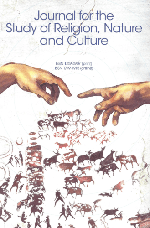Sarah Pike on White Supremacy at the Farmers’ Market
We’re excited to share this recent post by former ISSRNC president Sarah Pike reflecting on racial politics and local food cultures in Bloomington, Indiana. As Pike argues in her piece, “Farmers’ markets and public libraries have the potential to be a meeting ground for a wide range of citizens’ perspectives, where protests and dialogue might coexist.” This article was originally published by Counterpoint Navigating Knowledge on January 22. Below is an excerpt from the article:
Political polarization has been increasing since the election of President Donald Trump, whose xenophobic views have emboldened white supremacists. On college campuses, violent attacks from both the left and the right amidst free speech debates have made headlines. While civic spaces like small-town libraries and farmers’ markets were thought to be free of such polarized encounters, they are no longer.
Last September, people wearing purple t-shirts reading “Justice is What Love Looks Like in Public” and “Boycott Schooner Creek Farm” protested in front of the Schooner Creek Farm booth at the Bloomington Farmers’ Market in southern Indiana. Behind the display, a young woman spoke with a customer buying potatoes and tried to ignore the protesters. The demonstration followed a summer of protests at the market, including activists giving out “Don’t Buy Veggies From Nazis” buttons and anti-fascist groups marching to the market dressed in black and covering their faces.
Since 2017, rumors had circulated that Schooner Creek farmer Sarah Dye was a white supremacist. Her racist online postings and emails were circulated within Bloomington and local anti-fascist activists began protesting against the farm. Dye posted in the online forum “Volkmom,” a “nod to the back-to-the-land völkisch [folk] movement identified with the Nazis during WWII,” according to Georgetown University’s Free Speech Project. Her comments included the following: “Any Whites who have spent time living in a neighborhood or attending a school with a non-white majority know the strife that Whites endure.”
You can read the whole article here.












